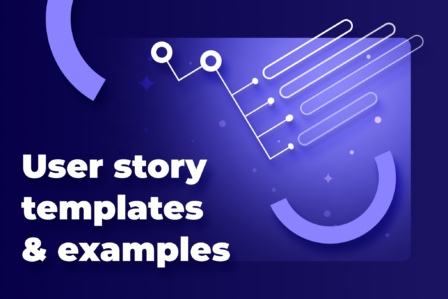Supporting Efficiency and Profitability of IT Departments with ITSM

The dynamic and constantly evolving corporate environment demands continuous adaptability from IT departments. Such a state of affairs is pivotal in fostering innovation and streamlining business operations. Sustaining their effectiveness forces the IT team to meet specific criteria for turning their investments into lucrative, or at least profitable, endeavors. In short, the IT depts are notoriously under pressure.
Table of contents
- Meeting the Requirements: The Foundation for Success
- Need a head start?
- IT Challenges: The Not-so-Hidden Obstacles
- I. Monitoring: Precision in Performance of IT Departments
- How ITSM may respond
- II. Replicability: Consistency for Reliability
- ITSM point of view
- III. Stability: Ensuring Seamless Operations
- How the company may respond using ITSM
- IV. Problem-Solving: Swift Issue Resolution
- The ITSM approach
- V. Cost Management: Optimizing Budgets of IT Departments
- From the ITSM perspective
- Conclusion
That means challenges or obstacles related to IT ventures, their effectiveness, and the company’s needs. Let’s examine essential conditions and factors opening the way to successful, data-driven IT teams. All that in the context of ITSM.
Meeting the Requirements: The Foundation for Success
Before diving into the challenges and ITSM solutions, let’s highlight the critical requirements for IT departments to make their investments profitable.
IT Governance: Aligning Investments with Goals
Implementing robust IT governance ensures that IT investments align with the organization’s goals and objectives.

It involves:
- establishing decision-making structures
- defining roles and responsibilities
- implementing processes to prioritize and evaluate IT investments.
According to McKinsey, companies with substantial IT governance outperform their peers in revenue growth and profitability by 20 to 30 percent.
Cyberthreats and IT governance are top risk areas for internal auditors to address in their audit plans for 2023.
— Gartner.com
Agile Project Management: Enhancing Success
Adopting agile project management methodologies can significantly enhance the success of IT investments. Agile approaches like Scrum or Kanban focus on iterative development, continuous feedback, and close collaboration between IT teams and stakeholders.
And this is not just an empty assumption. A Project Management Institute (PMI) study found that organizations using agile project management practices complete projects 28% more often than those using traditional approaches.
Need a head start?
Jump to our free IT Service Management (ITSM) e-book
and discover all the benefits and practical applications!
IT Performance Measurement: Data-Driven Decision-Making
Along with choosing and implementing proper management methodologies, the crucial thing is establishing metrics and Key Performance Indicators (KPIs) to measure IT investments’ performance.
Tracking metrics like:
- return on investment (ROI)
- cost savings
- customer satisfaction
- IT service quality
allows organizations to evaluate effectiveness and profitability.

Top-performing companies prioritizing IT performance measurement achieve 26% higher revenue growth and 50% higher operating income growth. These are the Hackett Group findings. They confirm that the described approach is a good standard.
Reality shows that even though data-driven decisions may seem fundamental, the topic returns in the business content on various occasions like a boomerang.
Continuous Improvement and Innovation: Staying Ahead
IT governance, Agile project management, and IT performance measures meet, among others, in fostering a constant improvement and innovation culture within the IT department. Especially since it creates an opportunity for higher profitability.
Identifying opportunities to optimize processes, adopting new technologies, and enhancing customer experiences keeps organizations competitive. Per McKinsey, the most innovative companies generate an impressive 33% of their income from fresh product offerings.

Of course, all those aspects alone may not be enough to push the IT teams (and their departments) onto the right track. Technology-based activities and processes strongly correlate with a handful of challenges that take time to avoid during long- and short-term business ventures.
IT Challenges: The Not-so-Hidden Obstacles
Let’s not forget that despite IT departments’ essential role in business development, they face several challenges hindering overall efficiency and productivity. The most common are:
I. Monitoring: Precision in Performance of IT Departments
From the IT and business operations perspective, monitoring is a vital practice involving systematic observation, measurement, and tracking of various aspects of an organization’s systems, processes, and performance.
It plays a crucial role in ensuring precision and efficiency across all levels of an enterprise. Here’s a more detailed exploration of the term “monitoring” and its significance.

- Performance Optimization: Monitoring enables organizations to track key performance metrics, identify bottlenecks, and optimize IT systems and processes for better performance.
- Proactive Issue Detection: Continuous monitoring aids in early issue detection, facilitating prompt resolutions and minimizing disruptions to business operations.
- Enhanced Security: Monitoring IT systems help identify vulnerabilities, detect suspicious activities, and mitigate potential risks, bolstering overall security.
- Compliance and Audit Readiness: Regular monitoring ensures compliance with industry regulations and internal policies, simplifying audit preparations and mitigating non-compliance risks.
However, some challenges related to the benefits described above are worth mentioning.
- Data Overload: Monitoring generates vast amounts of data, which can be overwhelming and challenging to process, analyze, and derive meaningful insights.
- Tool Complexity and Integration: Organizations often use multiple monitoring tools and systems, making integrating data from different sources challenging and managing complex monitoring environments effectively.
- Alert Management: Monitoring systems often generate numerous alerts, making it challenging to differentiate critical alerts from false positives, requiring efficient alert management processes.
How ITSM may respond
ITSM provides methods and tools for streamlined monitoring, aggregating data, and giving clear insights. It simplifies the process of identifying critical issues and responding promptly.

- Streamlining Monitoring: Offering structured processes for organized monitoring aligned with goals.
- Aggregating Data: Centralizing data from various sources to provide a comprehensive view.
- Clear Insights: Translating data into actionable insights for informed decisions.
- Issue Identification and Response: Triggering alerts and facilitating prompt responses to issues.
- Continuous Improvement: Fostering a culture of ongoing optimization and service enhancement.
II. Replicability: Consistency for Reliability
Replicability is a fundamental concept that focuses on achieving consistency and reliability in outcomes. More so, looking at scientific research, manufacturing, software development, business processes, and other areas. The benefits derived from replicability improve:
- Consistency: Replicability ensures consistent IT service and solution delivery, reducing variations and enhancing reliability.
- Efficiency: Repeatable processes streamline operations, reduce errors, and boost efficiency.
- Scalability: Scalable processes can be replicated and expanded as organizations grow, ensuring consistent outcomes and reducing dependence on individual expertise.
Of course, in most cases, such an approach may be demanding.
- Process Documentation: Capturing and documenting repeatable processes can be time-consuming, requiring ongoing maintenance and updates.
- Resistance to Change: Implementing repeatable processes may face aversion from employees accustomed to previous practices, necessitating change management efforts.
- Balancing Flexibility and Standardization: Striking the right balance between standardized processes and the need for flexibility to address unique situations or evolving business needs can be challenging.
Consistency is the belt that fastens excellence in position. If you don’t do it repeatedly, you’ll not excel in it.
— Israelmore Ayivor
ITSM point of view
IT Service Management responds effectively to the need for consistency and reliability in IT and business processes through:
- Automation: For routine tasks for consistent results.
- Standardization: Establishing uniform service delivery processes.
- Documentation: Emphasising comprehensive process documentation and knowledge management.
- Change Management: Ensuring careful planning and execution of changes to maintain reliability.
- Incident and Problem Management: Addresses issues promptly and prevents recurrence.
- Continuous Improvement: Promoting ongoing process optimization for sustained reliability and efficiency.
III. Stability: Ensuring Seamless Operations
Stability is one of the most wanted elements in the business realm. Regarding business operations and IT management, stability guarantees smooth and dependable everyday operations.
This facet encompasses many elements that collectively support the reliability of an organization’s procedures, technology infrastructure, and service delivery. And that means:
- Reliable Operations: Stability guarantees consistent and reliable IT system and service performance, minimizing downtime and disruptions.
- User Satisfaction: Stable IT environments enhance user experiences, increasing productivity and customer satisfaction.
- Reduced Support and Maintenance Costs: Stable systems require fewer support interventions and maintenance activities, resulting in cost savings.
Replacing spinning disks (hard drives) with flash has reduced overhead costs.
— Ranga Nathan, netapp.com
Considering that, we should remember that these benefits entail a few impediments and, thus, necessities.
- Legacy Systems and Technical Debt: Legacy systems can introduce instability due to outdated technologies, compatibility issues, and complex dependencies, requiring careful management and modernization efforts.
- System Complexity: Complex IT environments with multiple integrated systems and dependencies can pose challenges in maintaining stability and addressing issues.
- Rapid Technological Advancements: Keeping up with new technologies and ensuring their stability can be challenging, requiring ongoing evaluation, testing, and adoption strategies.
How the company may respond using ITSM
ITSM provides methods and tools supporting effective system monitoring, change management, and modernization strategies. It ensures the stability of IT systems through proactive maintenance.

- System Monitoring: Continuously tracks performance and security, addressing real-time issues.
- Change Management: Ensures planned changes don’t disrupt systems, preserving stability during updates.
- Modernization Strategies: Encourages updates to prevent outdated systems from becoming unstable.
- Proactive Maintenance: Focuses on preventive measures to maintain system stability and reliability over time.
IV. Problem-Solving: Swift Issue Resolution
There is only stability with problem-solving (mindset and tools). It is absolutely crucial to effective business operations and a must-have in IT management. No matter how marketing-like it may sound, this is the essence of running the business in every possible aspect.
If so, it revolves around identifying, analyzing, and resolving issues efficiently and swiftly, ultimately leading to the uninterrupted flow of operations.
- Faster Issue Resolution: Effective troubleshooting methodologies enable IT teams to diagnose and resolve issues efficiently, minimizing downtime and user impact.
- Root Cause Analysis: Troubleshooting helps identify underlying problems, allowing organizations to implement corrective measures and prevent future occurrences.
- Improved Support Services: Efficient troubleshooting enhances customer support and user satisfaction by addressing issues promptly and effectively.
However, to make all three benefits come to fruition, the company may be challenged by:
- Complex Systems: Troubleshooting complex IT systems requires a deep understanding of interdependencies and interactions between different components, which can be challenging. After all, they should support all processes, meaning “a system of connected vessels.”
- Limited Documentation: Inadequate documentation of systems and processes can hinder troubleshooting efforts, making it harder to identify and resolve issues.
- Time and Resource Constraints: Troubleshooting complex issues can be time-consuming, requiring skilled personnel and sufficient resources to investigate and resolve problems.

The ITSM approach
With IT Service Management methodologies, businesses may establish the following (among others):
- Structured Troubleshooting: ITSM shows a step-by-step approach to systematically diagnose and resolve IT issues, reducing ambiguity and ensuring effective problem-solving.
- Detailed Documentation and Knowledge Management: Encouraging thorough record-keeping, it builds a repository of known problems and their solutions, facilitating quick reference and efficient troubleshooting.
- Incident Tracking and Management: ITSM includes tools to log and track incidents, ensuring that each issue is assigned, monitored, and resolved, preventing overlooked problems.
- Incident Prioritization: It assists in categorizing incidents based on their impact and urgency, enabling the swift resolution of critical issues and minimizing operational disruptions.
- Integration with Change Management: Seamlessly integrating with change management processes ensures system alterations are rigorously assessed for potential complications, enhancing overall system stability.
- Continuous Improvement: ITSM encourages ongoing analysis of incident data to identify trends and root causes, allowing organizations to address issues and improve overall system reliability proactively.
V. Cost Management: Optimizing Budgets of IT Departments
Last but not least is the element that holds every aspect discussed above. Most of the time, cost management provides a foundation for improving IT teams’ performance and effectiveness. Yet, at the same time, all threads presented so far are interdependent.
Cost management is a crucial practice that involves optimizing budgets, resource allocation, cost analysis, cost reduction strategies, risk mitigation, performance measurement, strategic decision-making, and ensuring long-term financial sustainability.

It focuses on efficient resource use, aligning budgets with strategic goals, and reducing costs while maintaining quality and performance. Cost management safeguards an organization’s financial health and ability to adapt to a dynamic business environment.
All these elements meet in benefits which we can picture in three main areas:
- Budget Optimization: Cost analysis helps organizations understand the costs associated with IT ventures, enabling better budget allocation and optimization.
- ROI Evaluation: Analyzing costs against benefits allows organizations to assess IT projects’ return on investment (ROI), guiding decision-making and resource allocation.
- Resource Efficiency: Cost analysis identifies areas of overspending or inefficiency, enabling organizations to make informed decisions to optimize resource usage and reduce unnecessary expenses.
Naturally, there are challenges related to:
- Cost Visibility and Granularity: Obtaining accurate and granular cost data across different IT ventures can be demanding, particularly in complex environments with shared resources.
- Cost Allocation: Allocating costs to specific ventures or business units can be complicated, thus requiring allocation methodologies and agreement on cost attribution principles.
- Intangible Costs and Benefits: Assessing and quantifying intangible costs and benefits, such as improved productivity or customer satisfaction, can lead to incomplete cost analysis.
From the ITSM perspective
It’s no surprise the set of such variables forces enterprises to find a way to make cost and budget management more flexible and, at the same time, transparent. Let’s look again at some points we already know.
- Cost Tracking and Management Tools: Leveraging specialized tools and processes, ITSM enables meticulous monitoring and management of IT expenses.
- Cost Allocation: Through ITSM, organizations can allocate expenses accurately, promoting equitable cost distribution across various projects and departments.
- ROI Analysis: ITSM plays a pivotal role in supporting ROI assessment by providing essential data for evaluating the value generated by IT investments.
- Cost Transparency: Enhancing transparency into IT cost structures, ITSM empowers organizations to make data-driven decisions and gain insights for financial management.
- Budget Optimization: With ITSM, organizations optimize IT budgets, ensuring alignment with organizational goals and objectives.
- Cost Efficiency: By providing insights from financial data, ITSM helps organizations identify cost efficiency and reduction opportunities.
- Resource Planning: ITSM offers valuable insights for effective resource allocation and utilization, preventing underutilization or overprovisioning.
Conclusion
Information Technology Service Management (ITSM) serves as a multifaceted solution to various challenges organizations face. ITSM responds effectively to company needs by offering specialized tools and systematic approaches.
From financial management to problem-solving, its diverse capabilities provide tangible benefits. It empowers organizations to meticulously monitor and manage expenses, allocate costs accurately, assess ROI, and optimize budgets, all while enhancing transparency in IT cost structures. This financial insight enables organizations to make data-driven decisions and improve cost-efficiency.
Furthermore, ITSM offers structured troubleshooting processes, facilitating swift issue resolution and supporting a proactive approach to maintaining system stability. It encourages a culture of continuous improvement, ensuring that recurring issues are addressed and operations remain seamless.
ITSM is a versatile framework that addresses an organization’s unique needs and fosters efficiency, reliability, and financial prudence. By leveraging ITSM’s capabilities, IT teams and their companies can confidently navigate the ever-evolving business and technological landscape, optimize IT investments, and deliver consistent value to stakeholders.
.



